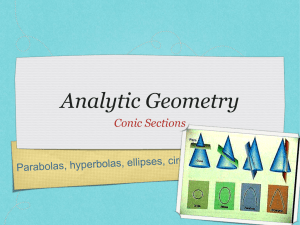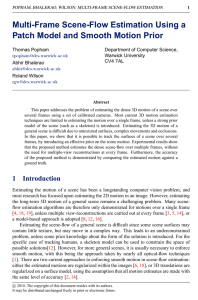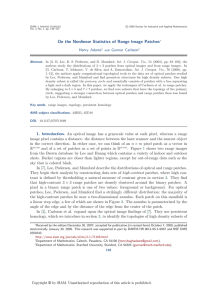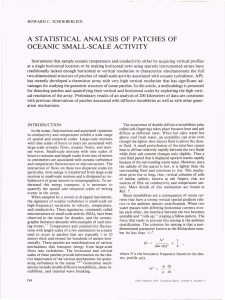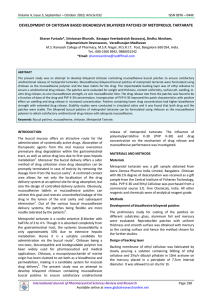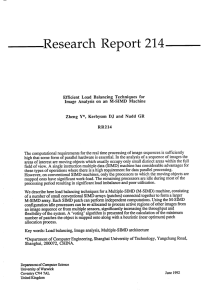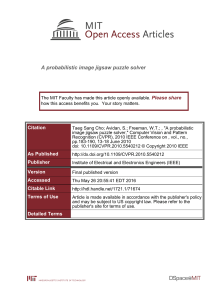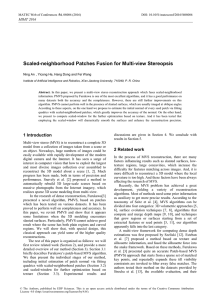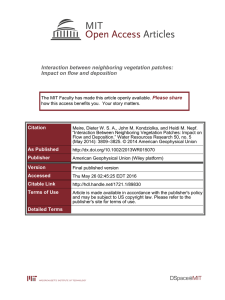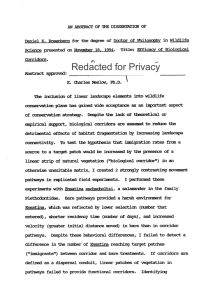Computer Graphics: Intro Jian Huang CS456 Electrical Engineering and Computer Science
advertisement
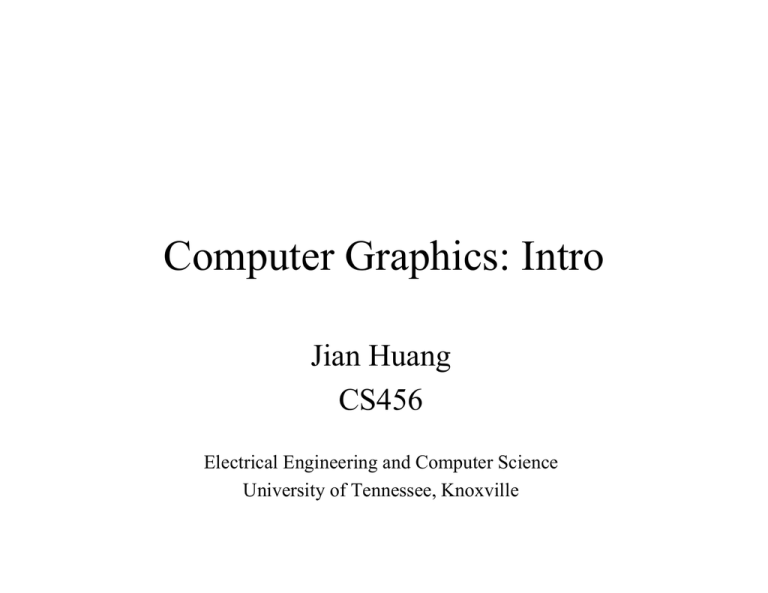
Computer Graphics: Intro Jian Huang CS456 Electrical Engineering and Computer Science University of Tennessee, Knoxville Fundamentally: Light Transport The Rendering Equation • I(x,x’) = intensity passing from x’ to x • g(x,x’) = geometry term (1, or 1/r2, if x visible from x’, 0 otherwise) • (x,x’) = intensity emitted from x’ in the direction of x • (x,x’,x’’) = scattering term for x’ (fraction of intensity arriving at x’ from the direction of x’’ scattered in the direction of x) • S = union of all surfaces Modeling Color - Physics • It’s all electromagnetic (EM) radiation – Different colors correspond to radiation of different wavelengths – Intensity of each wavelength specified by amplitude • Frequency = 2 pi/wavelength • We see EM radiation within the 400-700 nm range, the tiny piece of spectrum between infra-red and ultraviolet Visible Light Color and Wavelength Most light we see is not just a single wavelength, but a combination of many wavelengths like below. This profile is often referred to as a spectrum, or spectral power distribution. 3-Component (Tristimulus) Color • The de facto representation of color on screen display is RGB. (additive color) • Some printers use CMY(K), (subtractive color) • Why? – The color spectrum can be represented by 3 basis functions? The Eye Color is Human Sensation • Cone and rod receptors in the retina • Rod receptor is mostly for luminance perception • 3 different types of cone receptors in the fovea of retina, responsible for color representation. Each type is sensitive to different wavelengths Cone Receptors • There are three types of cones, referred to as S, M, and L. They are roughly equivalent to blue, green, and red sensors, respectively. • Their peak sensitivities are located at approximately 430nm, 560nm, and 610nm for the "average" observer. Limitation of Knowledge • We don’t know the precise light sensitivity on each person’s retina. So, what is the standard color? • The basis of comparison is not math!! • The basis of comparison is human color matching experiments • 100% mathematically correct light object interaction need to be evaluated at more than 3 points in the spectrum Main Color Spaces • • • • CIE XYZ, xyY RGB, CMYK HSV (Munsell, HSL, IHS) Lab, UVW, YUV, YCrCb, Luv, Modeling Eye– Pin Hole Camera • Visibility cone with apex at observer • Reduce hole to a point – the cone becomes a ray • Pin hole – focal point, and center of projection F P P Modeling Eye - The Viewer • Viewing: camera position and direction • Projection: reduce 3D to 2D Modeling Eye – Frame Buffer, Image, Raster Display • TV boom made it cheap • Entire screen painted 30 times/ sec • Screen is traversed 60 times/ sec • Even/ Odd lines on alternate scans, ‘interlace’. Raster Displays • • • • Display synchronized with CRT sweep Special memory for screen update Pixels are the discrete elements displayed Generally, updates are visible Double Buffer • • • • Adds a second frame buffer Swaps during vertical blanking Updates are invisible Costly Color CRT • Requires precision geometry • Patterned phosphors on CRT face • Aligned metal shadow mask • Three electron guns • Less bright than monochrome CRTs Active Matrix LCD • E field is retained by a capacitor so that the crystal remains in a constant state. • Transistor switches are used to transfer charge into the capacitors during scanning. • The capacitors can hold the charge for significantly longer than the refresh period • Crisp display with no shadows. • More expensive to produce. Plasma Display • Basically fluorescent tubes • High- voltage discharge excites gas mixture (He, Xe), upon relaxation UV light is emitted, UV light excites phosphors •Large view angle •Large format display •Less efficient than CRT, more power •Large pixels: 1mm (0.2 mm for CRT) •Phosphors depletion Modeling Geometry • Example modeling package: Alias Studio Patch – Parametric Surface • Use patches model as implicit or parametric surfaces • Beziér Patches : control polyhedron with 16 points and the resulting bicubic patch: Patches • The Utah Teapot: 32 patches single shaded patch wireframe of the control points Patch edges Patches to Polygon Meshes Triangle Meshes • Set of surface polygons that enclose an object interior, polygon mesh • De facto: triangles, triangle mesh. Modeling Material Modeling A Scene Required Background • • • • • Basic linear algebra – matrices and vectors Data structure Computer Architecture Proficient programming Technical communication Computer Graphics Subjects • Rendering • • • • Geometry Processing Rasterization Shaders Graphics Architecture Key Words so far • (Surface) Geometry • Viewing and projection • Matrix Transformation • Mesh and patch • Rasterization • Color model • Texture, lighting and shading • Pixels • Framebuffer
